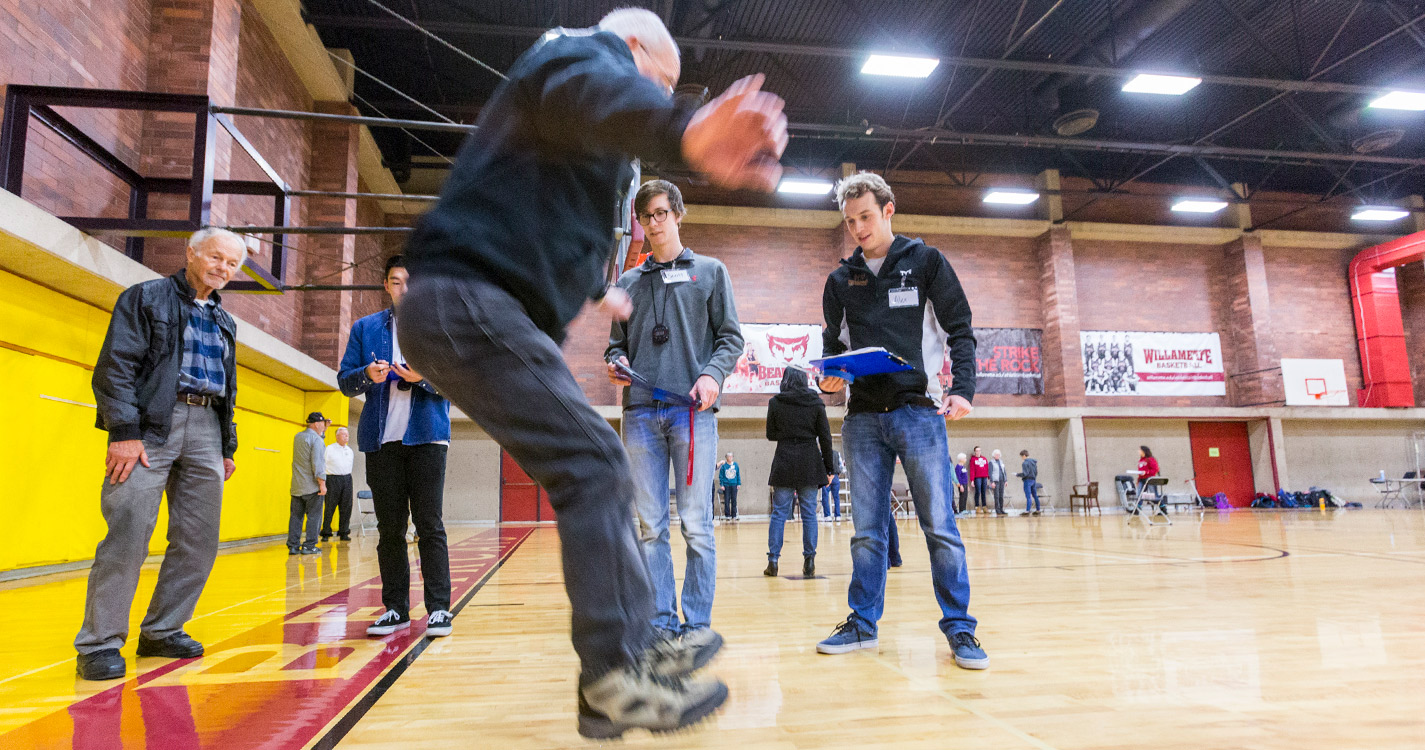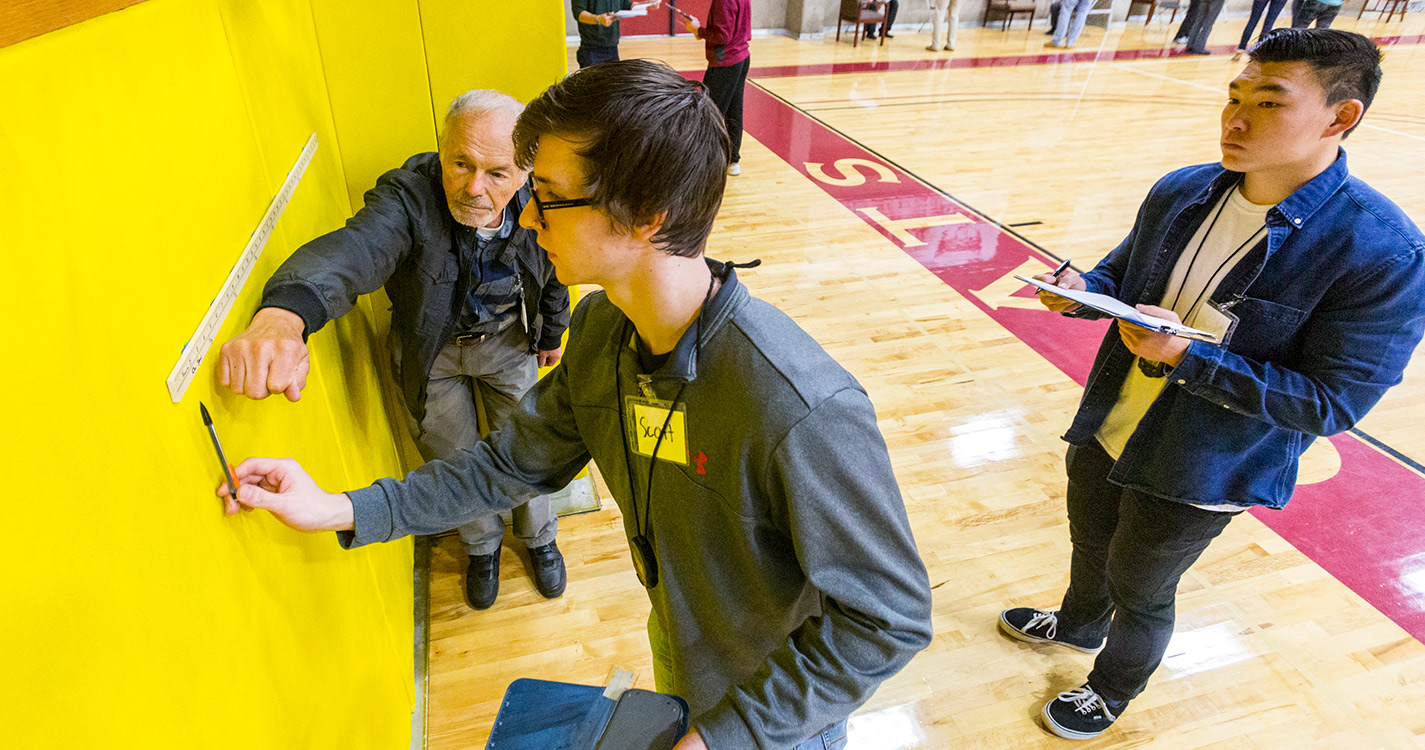Two elderly men stand near the wall in Henkle Gym, slightly trembling, their arms folded across their chests.
Perched on large foam squares, the men are trying to maintain their balance, and it’s harder than it looks.
Exercise science students Scott Methner ’20, Nate Dunford ’19 and Alex Hougan ’20 observe the men and jot notes. They’re collecting measurements from senior volunteers in the Salem area for a class — “Aging, Health and Functional Assessment,” led by Associate Professor of Exercise and Health Science Brandi Row Lazzarini ’96 — that investigates the physical changes associated with aging.
Students learn how to perform functional tests that assess seniors’ strength, balance, mobility and endurance, just as they would in clinical settings like physical rehabilitation clinics. It’s an opportunity “students normally don’t have until they’re in grad school or in training for a healthcare profession,” Row Lazzarini says — last year, one former student snagged a physical therapy aide job because his supervisors were impressed he had this specific experience.
Senior citizens benefit from the class, too. Karen Sewell, 78, of Salem says she volunteered because she wanted to see how her abilities stacked up against her age group, as well as better identify her physical weaknesses so she can improve.
“The bonus is working with these young students,” she says. “This is an age group I don’t have exposure to in my regular life.”
Measuring movement
Over four visits, students run senior citizens through a series of simple tests, like walking for six minutes or doing arm curl weight-lifting exercises.
They use performance measurements to examine relationships between tasks, such as whether strength is correlated with balance.
In the process, students learn how to work with an elderly population and deliver feedback to both high-functioning senior citizens and ones who struggle with mobility.
At the end of the semester, student groups make a final presentation based on a specific topic related to aging or a medical condition in the elderly population, such as depression or stroke.
The class also aims to give students practice talking about research in terms everyone can understand. Senior volunteers are invited to attend their presentations, as well as retired staff and faculty and Institute for Continued Learning students.
Row Lazzarini says, “It’s practice bringing science to the public and conveying it correctly.”
The class also offers important lessons that apply outside the classroom. Methner says he’s more sensitive about how he treats senior citizens now — he’s learned to avoid unintentional infantilization — and that awareness will be helpful in his future career as a dentist.
Aging is inevitable, and everybody’s going to go through it, he says: “There is no difference between you and senior citizens.”


